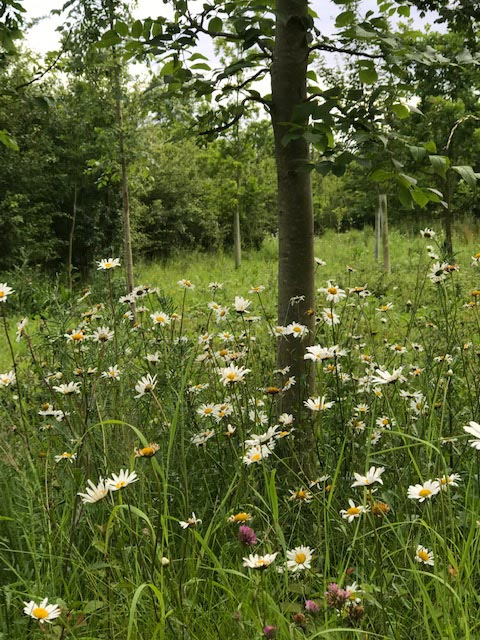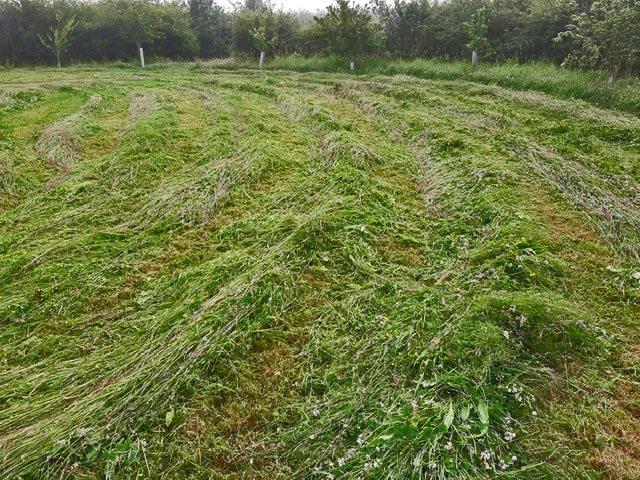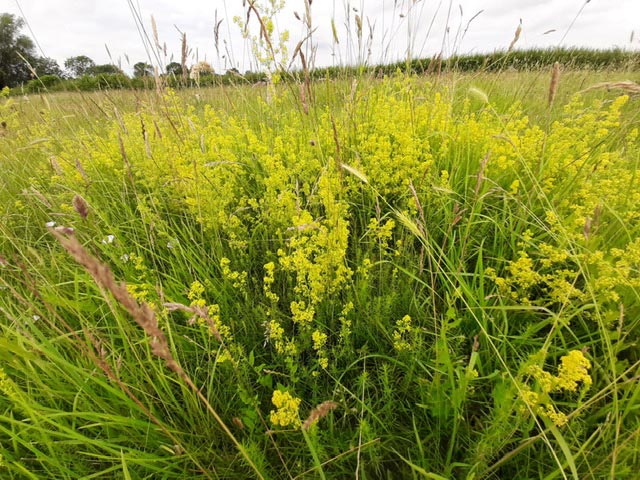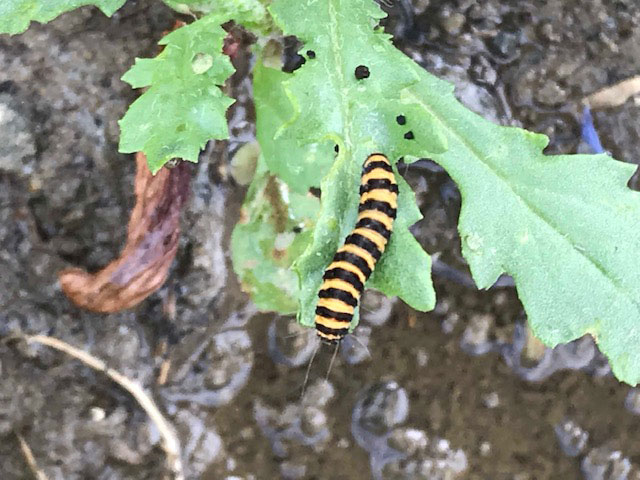It’s been a month of very varied weather from windy and wet days interspersed with blisteringly hot ones including the hottest temperature officially recorded in the UK at the Cambridge Botanic Garden of 38.7C. It looks like it’s going to be the second hottest year ever recorded on Earth although it’s still too early to be sure about that prediction, but experiencing a week of sweltering days and nights here in our part of the world makes me inclined to believe it.
Benefits of planting trees
At least we are lucky enough to have access to nature’s air conditioning system, a wood. There are multiple practical benefits to trees as well as the obvious ones of being able to appreciate their beauty and changing form throughout the year. People in cities have been really struggling to cope with the heat wave and city authorities throughout the world are realising the benefits of planting trees which shade the streets and cool the air as water evaporates from their leaves. This process, called transpiration, helps cool the tree and also pumps water and minerals up tiny capillaries from the roots to the leaves for photosynthesis to occur. Fortunately for us, we feel the cooling effect this produces as we walk under their canopy whether we’re in the city or the countryside. Jubilee Wood is a wonderful place to go when it’s hot and we need to cool down, the maturing trees providing cool shade and air along the winding pathways that lead to the central area.

A perfect space
Following the cutting of the grass along the rides and this central area early in the month by hard working volunteers, the wonderful smell of hay drifted round the wood before it was quickly baled up whilst this unpredictable weather held warm and sunny. The summer picnic could then be enjoyed on shorter grass, and the Pop up Knowledge Share which this month was ‘Nature and Well Being – a journey through the senses ‘, took place just before the picnic. It is a perfect space for encouraging us all to be aware of our surroundings and to enjoy the opportunity of socialising together.

Lady’s bedstraw
Plants such as Galium verum, or Lady’s bedstraw are growing in the wood, and it is much more evident generally in hedgerows and edges of fields this year so conditions must have been just right for it to spread. The yellow flowers have a sweet, honey like smell and are very attractive to pollinators, especially moths. It’s probably the reason why it was used as a stuffing for beds and as a floor covering, but it was also used as dyes for butter, cheese, hair and textiles. It’s also sometimes called Cheese Rennet because it can curdle milk and was used in cheese making, a convenient vegetarian replacement for rennet!. As well as all these attributes it has a long history of use as a herbal medicine so it is an extremely useful plant as well as a lovely one to look at.

Cinnabar Moth
Finally, it’s been a fantastic year for Cinnabar Moth caterpillars which can be found on the tall yellow daisy known as Ragwort, Senecio jacobaea or on Groundsel, Senecio vulgaris, which are their two food sources. The toxins within Ragwort make it so bitter that it’s usually avoided but cinnabar caterpillars actually benefit from it as they become toxic themselves and their colourful yellow and black stripes warn predators that it wouldn’t be a good idea to eat them. When fully grown they then leave the plants and pupate just beneath the surface of the soil for the winter. Keep an eye out for them as you wander round the wood and look forward to seeing the flashes of red and black moths early next summer…..

The Wood Wanderer
Might be worth noting that the yellow daisy you speak of or Ragwort is highly poisonous to cattle and horses and
as such is it covered by the Weeds Act 1959 and the Ragwort Control Act 2003.
It is therefore recommended that it is removed from any areas bordering grazing land so to prevent the spread of this weed.